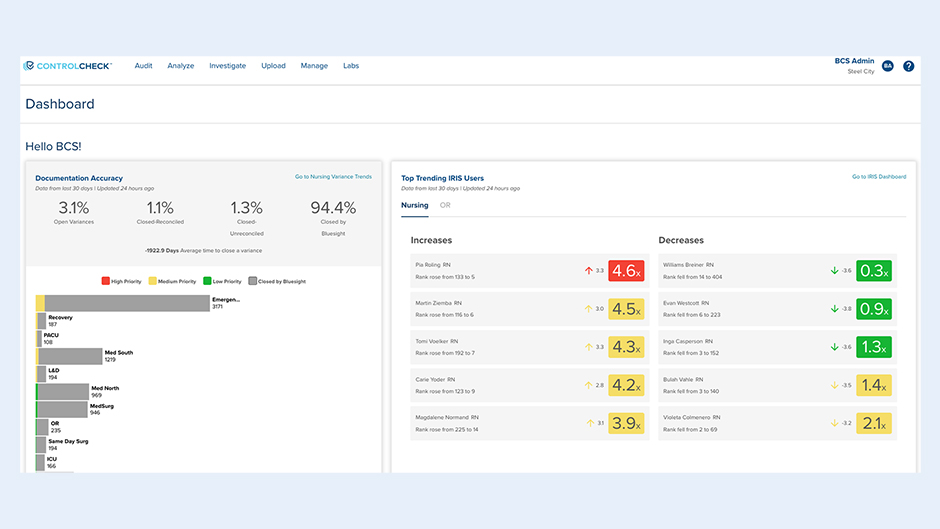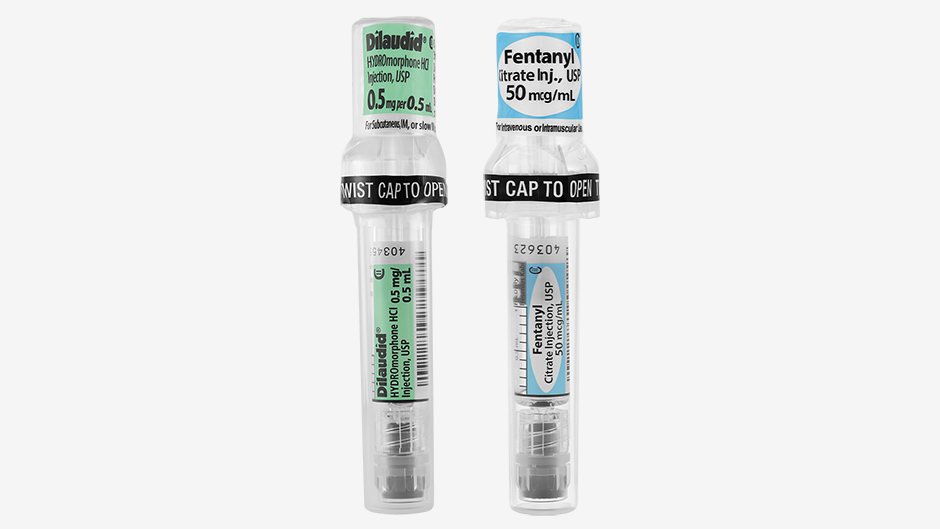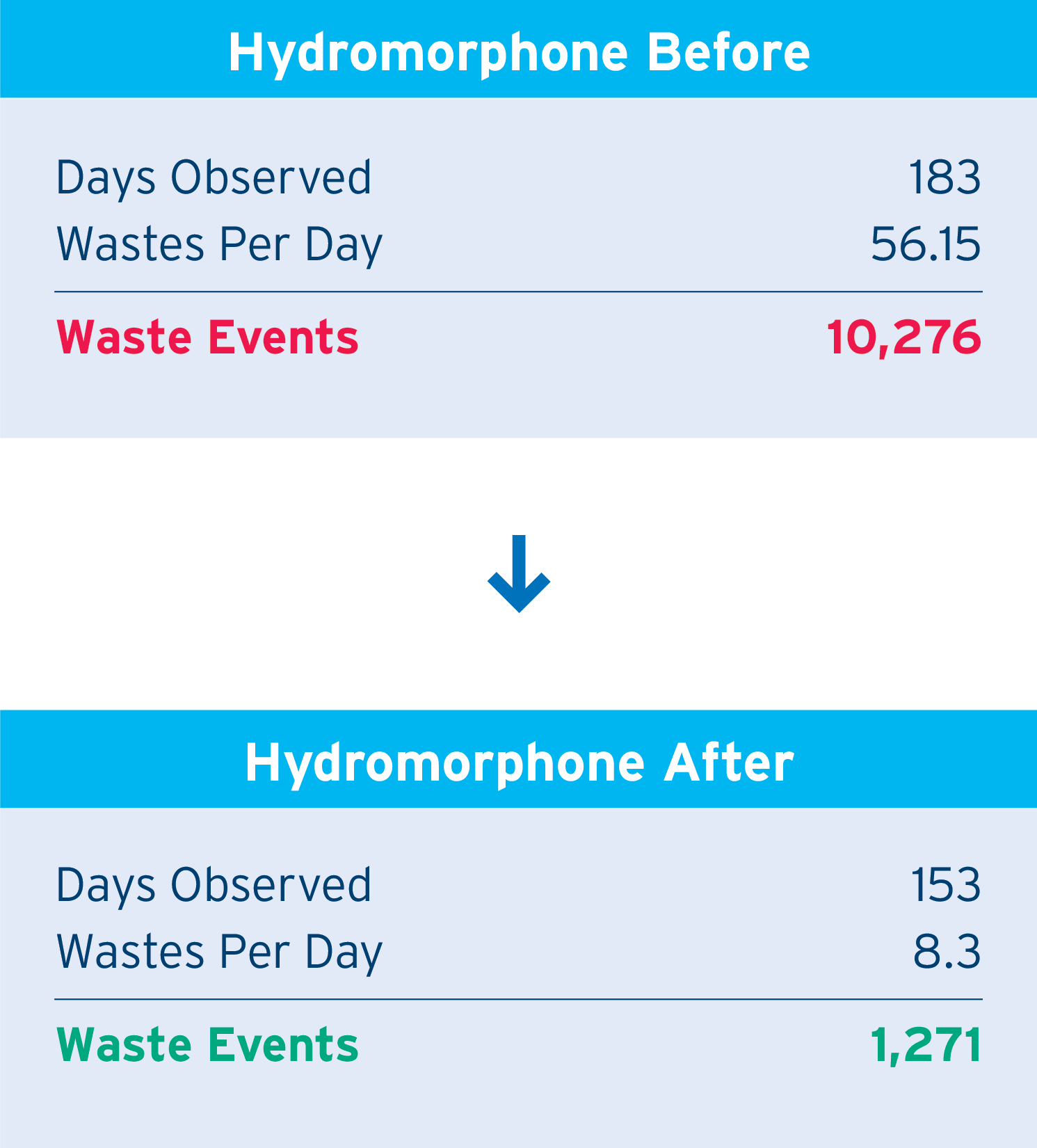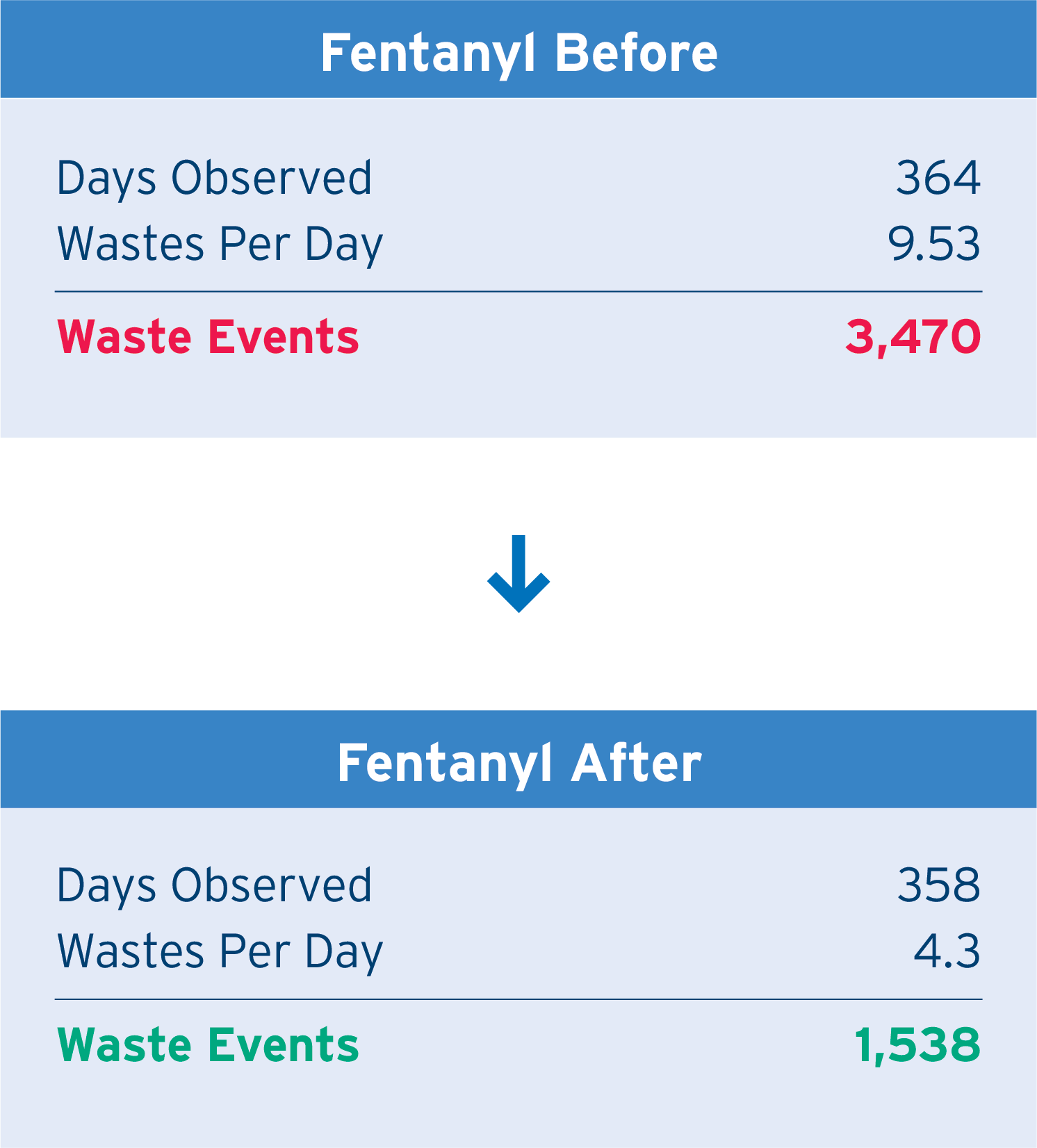Reducing Waste and Ensuring Accountability: A Case Study with Simplist® and RxAuditor Analytics
Middlesex Health
Disclaimer: Testimonials and data that appear on this case study are provided by real clients. Case Studies describe our past work on real cases, but our past performance in a specific case is no guarantee or representation of the likelihood that you will prevail in your case if you use our products or services.
85%
Reduction in overall Hydromorphone waste events*
55%
Reduction in overall Fentanyl waste events*
410
Nursing hours saved annualized
The Challenges
- Identifying and investigating potential drug diversion incidents
- Inefficient clinician workflows related to dispensing and wasting controlled substances
The Solution
- More closely match clinical practice for commonly used opioid medications
- Utilize AI diversion software to identify potential drug diversion events through pattern recognition
The Impact
- Decreased hydromorphone and fentanyl waste by 85% and 55%, respectively, resulting in fewer opportunities for diversion
- Reduced the time nurses spend counting and wasting controlled substances
- Reduce the time required for pharmacy staff to investigate discrepancies and potential diversion events
*Data provided by Bluesight on behalf of Middlesex Health and analyzed by Fresenius Kabi’s Simplist Support Team.
Introduction
Middlesex Health, a Mayo Clinic Care Network member, is a fully connected, comprehensive network of expert health care providers in Middletown, Connecticut, serving Middlesex County and the Connecticut state shoreline. At the heart of this network is Middlesex Hospital, with 275 licensed beds, which provides inpatient medical, surgical, and emergency services, as well as vital outpatient care, including diagnostic, rehabilitation, behavioral health, disease management, radiology, laboratory, cancer care, home care, wound and ostomy care, surgical services, urgent care, and an extensive network of primary care practices.
Through its suite of medication intelligence solutions, Bluesight enables healthcare organizations to proactively identify drug diversion in automated dispensing systems with pinpoint precision and control. RxAuditor Analytics, recently acquired by Bluesight, is a web-enabled drug auditing system that provides customers with the ability to proactively measure, monitor, and manage key automated dispensing system metrics in real-time. Powered by AI and a machine-learning engine, RxAuditor Analytics eliminates the need to search reports manually. The platform autonomously investigates diversion cases, which in turn brings back valuable work hours to critical responsibilities, such as delivering the highest level of patient care possible. This technology will become part of ControlCheck in the near future due to the recent acquisition.
Fresenius Kabi USA is a global, integrated pharmaceutical company dedicated to bringing lifesaving medications and solutions to clinicians. For more than 100 years, the company has been a leader in providing high-quality, affordable medications for chronically and critically ill patients. Fresenius Kabi produces Simplist, a single unit dose prefilled syringe platform. Designed for efficient medication delivery and ease of use, Simplist may help reduce waste potential and eliminates steps where errors can occur.1,2
The Challenge
“In every organization, drug diversion is a potential threat to patient safety. Risks to patients include inadequate pain relief and exposure to infectious diseases from contaminated needles and drugs, compounded by impaired performance. Furthermore, diversion may cause undue suffering to patients who don’t receive analgesic relief, can be costly to an organization by damaging its reputation, and may lead to major civil and criminal monetary penalties.”
Drug Diversion and Impaired Health Care Workers: April 20193
In response to the opioid crisis, hospitals across the country are taking a more strategic approach to opioid stewardship. Doing so better ensures the safe and effective use of opioid drugs—not only reducing potential patient safety issues but also potential opportunities for drug diversion.
While pain management remains an important part of treating patients, the use of narcotics presents a number of operational challenges. Research studies indicate that roughly 10 percent of American healthcare workers abuse controlled substances, a number that matches the abuse rate within the general population.4 Several high-profile cases of drug diversion at U.S. hospitals have resulted in costs adding up to millions of dollars. As a result, an increasing number of hospitals are now implementing narcotic diversion platforms, leveraging the power of analytics, to identify potential diversion patterns in the ordering, dispensing, and wasting of narcotics within the institution. The goal is simple: to ensure that controlled substances are being used appropriately—and, equally as important, quickly identify potential diversion events.
Programs like the Bluesight’s RxAuditor Analytics diversion analytics suite solution scours narcotic use records to quickly identify drug diversion through pattern recognition based on actual diversion event data, reducing the need for pharmacy staff and nursing supervisors to manually search reports. The platform also includes key data and insights about the volume of narcotic waste—a data point that is often a risk factor for drug diversion.

Bluesight’s Analytics dashboard.
“One of the biggest challenges we face is reconciliation of opioid waste. We work hard to make sure that we’re checking all the boxes and investing in high impact projects that can help support our opioid stewardship. But we were spending a lot of time looking for discrepancies in waste reporting that could be better spent elsewhere.”
Jason Zybert — Director of Pharmacy at Middlesex Hospital
Zybert also noted that controlled substance waste at Middlesex Hospital required significant nursing hours. Two nurses are required to be present to document any waste—but, even so, it’s well known that such wasting events can increase opportunities for diversion.3
The Solution
As noted in the ASHP Guidelines on Preventing Diversion of Controlled Substances, August 2022,5 “Policies and procedures should define how waste will be accounted for, tracked, and disposed of to prevent unauthorized access. To minimize waste, when possible, controlled substances are [recommended to be] stocked in ready-to-use form and in the lowest commercially available units for doses frequently prescribed for patients.”
Middlesex Hospital already had Bluesight’s RxAuditor Analytics diversion analytics suite in place when they decided to add Simplist ready-to-administer syringes from Fresenius Kabi in smaller narcotic presentations that closely match product size to their clinical practice and, consequently, reduce waste. In 2018, Middlesex Hospital introduced Dilaudid® (HYDROmorphone HCl) Injection, USP 0.5 mg per 0.5 mL Simplist syringes. When Simplist Fentanyl Citrate Injection, USP 50 mcg per 1 mL was released in 2021, Middlesex Hospital also switched to these syringes to support their efforts to curtail narcotic waste.
“We wanted to implement solutions that could help us better match our clinical practice while also helping to reduce waste, reduce nursing time, and reducing our overall diversion risk,” said Zybert.

See full Important Safety Information, including Boxed Warning
The Results
After implementing the new Simplist ready-to-administer syringes, in concert with their existing Bluesight’s RxAuditor Analytics diversion analytics suite solution, Middlesex Hospital was able to reduce narcotic waste across the facility, as well as make key system-wide opioid stewardship performance improvements.
Adding ready-to-administer syringe products that more closely aligned with clinical practice reduced hydromorphone and fentanyl waste by 85% and 55%, respectively. Utilizing the financial framework as demonstrated in A Continuous Observation Workflow Time Study to Access Intravenous Push Waste (2020),2 this reduction represents an estimated $46,309.88 in annual narcotic wasting cost.
“Having the product sizes that better matched our clinical practice helped us reduce waste and make a big impact throughout our stewardship program,” said Zybert.
WASTE DATA OBSERVED: PRODUCT OPTIMIZATION OPPORTUNITIES
In addition to reduction in waste, the change resulted in significant time savings and improved workflows for nursing and pharmacy staff. Using the same Hertig 2020 framework, which conservatively doesn’t account for waste witness time or pharmacy time, this waste reduction represents 410 hours’ worth of nursing time saved.
“Our nurses like the product because it’s ready to use. They don’t have to draw from a vial to administer the medication. They can just pull it out of the packaging and have the medication ready. And, my opinion is when you can reduce waste, you decrease the risk of diversion,” Zybert said. “On the pharmacy side, we see benefits in the tamper-evident packaging, especially when diversion is suspected. It makes it much clearer whether something has happened with an individual product or something else may be going on.”
Overall, by focusing on maximizing opioid stewardship through reviewing data and reducing waste, Middlesex Hospital was able to improve their operations and reduce the time nursing and pharmacy spent documenting and handling it.
Let's reduce narcotic waste together
Schedule a call with our Pharmacy Analytics team for a custom analysis
Contact us
